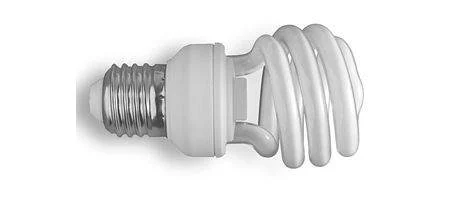If broken and not removed, a compact fluorescent light bulb can release enough mercury vapor to exceed safe limits, a research team has found.

The bulbs continuously release mercury vapor into the air for weeks or months, they say. And if a bulb is broken and not replaced – or broken, unnoticed, while stored away in its packaging – the total amount can exceed safe human exposure levels.
The amount of liquid mercury that leaches from a broken compact fluorescent lamp is lower than the level allowed by the US Environmental Protection Agency (EPA), which is why they’re not considered hazardous waste.
However, Yadong Li and Li Jin of Jackson State University say that the total amount can exceed this. As people can readily inhale vapor-phase mercury, they say, it’s important to remove broken CFLs rapidly and make sure ventilation is adequate.
They also call for more suitable packaging to minimize the risk of breakage of CFLs and to retain the mercury vapor if they do break.
After testing eight different brands and four different wattages, the team found that mercury content varies significantly from brand to brand.
To determine the amount actually released by a broken bulb, they used standard procedures developed by the EPA, along with an emission monitoring system.
“This paper is a very nice holistic analysis of potential risks associated with mercury release from broken CFLs and points to howpotential human health threats that have not always been considered,” says Domenico Grasso of the University of Vermont.






